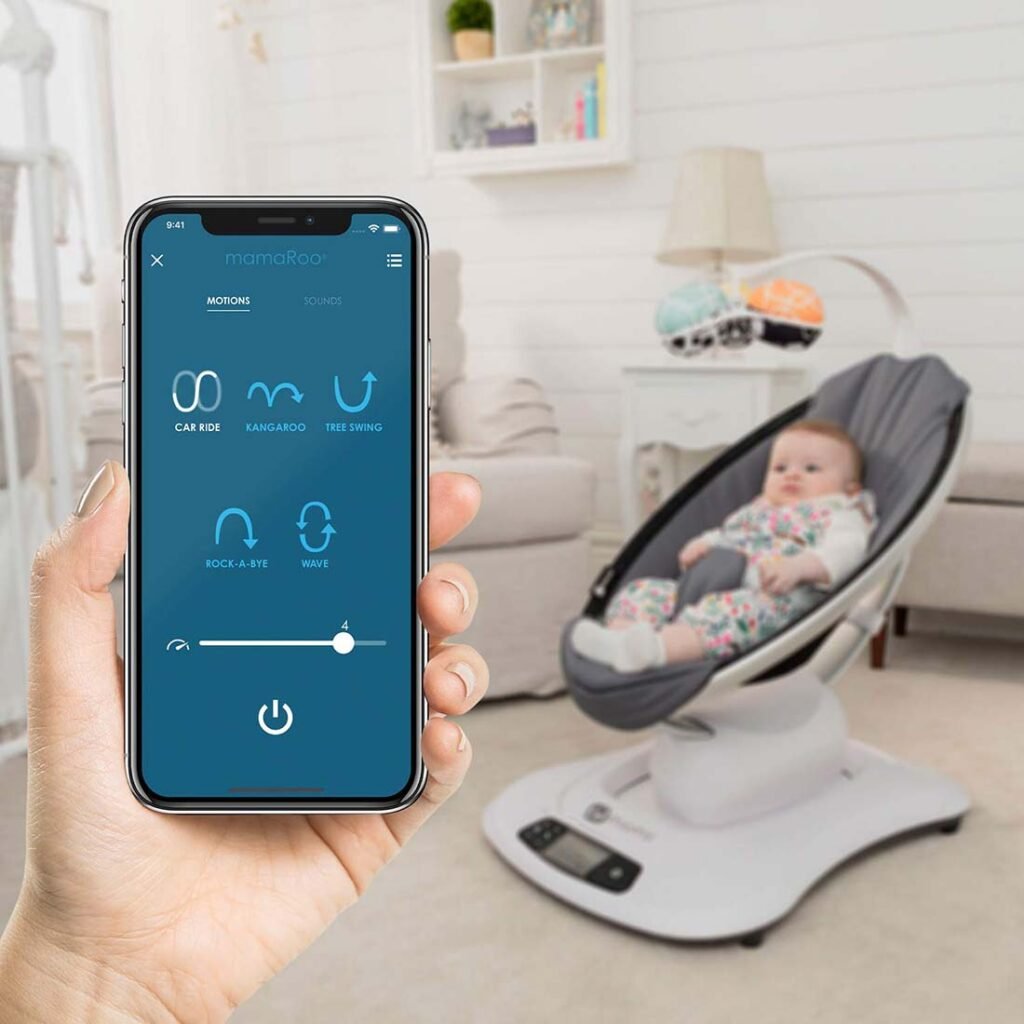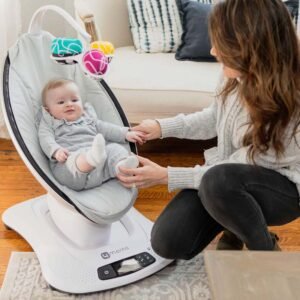
A baby swing comes in handy on many occasions. Whether you want to free your arms for some time, rock the baby to sleep, or keep the infant close by, it proves useful.
However, there comes a time when your baby outgrows the swing. At that moment, the swing is no longer safe for the kid and restricts her freedom of exploration.
Sadly about 3500 babies in the US annually succumb to sleep related deaths. Correct use of swings and baby seats is thus vital.
But how do you know that your little angel has outgrown the swing? And when is the correct time to transition from the swing to the crib?
Read on to find out.
What’s a Baby Swing?
As the name implies, a baby swing is a comfortably padded chair that dangles on a sturdy frame such that it can rock back and forth or from side to side. When you need to swing your infant and help her drift to sleep, a baby swing comes to your aid.
How to know Your baby Has Outgrown the Swing
There isn’t any fixed age for a child to stop using a baby swing. That’s because every infant is unique in his way. Babies approach different stages of development like crawling and walking at varying ages.
For that reason, your baby may outgrow the swing earlier than the next-door child. It all depends on many factors.
The key determining factors are weight and the ability to explore the surrounding without external aid. Besides, some babies get bored sooner than others.
Here are the indicators that your baby has outgrown the swing
Signs and Indicators that the Baby Has Outgrown the Swing

1. Restless and Strives to Crawl Out
Some infants use swings up to the age of 9 or 10 months. After such a period the baby may register signs of being restless in staying in the swing.
For example, she may show a desire to reach out and grab things surrounding her, for example adjacent feeding items. Further, the infant may get extra alert and try to crawl away from the swing.
And crawling out of the swing without external help may cause her injuries. At that time, her desire to explore the surrounding is unstoppable. All those signs mean that your infant has outgrown the swing.
2. Age and Weight Limits
The design of most baby swings isn’t identical. Some manufacturers specify both age and weight limits, others only mention the weight limits.
For example, the Graco Simple Sway Swing supports an infant of up to 30lbs weight. On the other hand the 4moms mamaRoo 4 Multi-Motion Baby Swing has a recommended maximum weight limit of 25lbs.
And therefore you need to know the specified age or weight limit. Once your infant has exceeded that age and weight limit, it means she has outgrown the swing. In such a case making transitional plans is inevitable.
3. Holds the Head Without Support
In the initial months following delivery, a newborn can’t hold and balance the head without support. That’s because the neck muscles aren’t fully developed by then. That’s why swings for infants have reclining support for the head.
As she progresses the muscles develop. Soon it reaches a time when the baby holds the head without external help. You may find such a baby supporting herself with her knee, and hands and striving to push herself up. Such kids can sit unaided by anyone else.
When that happens, chances of her rolling onto one side are very real. At the same time, the likelihood of the infant strangling herself with the harnesses is also possible.
The safest step to take then is graduating from the infant swing to a more comfortable seat or Jumperoo.
4. Swing No Longer Interesting
 A baby can also outgrow the swing when still within the age, height, and weight limit. So keep a check on the infant while in the swing.
A baby can also outgrow the swing when still within the age, height, and weight limit. So keep a check on the infant while in the swing.
The swing is meant to be fun and soothing to the child. Therefore if it can no longer soothe the child to sleep or the she finds it uninteresting, move on to a jumper or crib.
For example, the infant may cry every time you put her in the swing.
5. Health Reasons
Pediatrics recommend against infants sleeping in a swing. Prolonged sleep in the swing may lead to a flat head. The swing is a piece of activity equipment that soothes the baby and helps her drift to sleep too.
At the same time, there are other underlying health conditions that if your baby suffers from automatically bars her from using the swing. For instance the GERD, Gastroesophageal Reflux Disease.
So if your baby develops such a disease, it means she has outgrown using the swing.
A research involving sleep related deaths of over 11000 infants indicates that 3 percent of the cases involved car seats and swings. And the odds of the accidents occurring are much higher when a non-parent is the one supervising the infant at home. Correct use of swings and supervision is therefore vital.
Location and How to Use a Baby Swing
But even before the infant outgrows the swing, its location matters. Erecting the swing in the incorrect spot increases the chances of an accident occurring. Take note of the following;
- Don’t place it near objects with sharp corners and edges
- Ensure there are no dangling curtains or toys that can easily strangle the child
- Don’t station the swing close to a power socket
- Preferably let the swing be close to a window where the baby can watch people pass by
- After assembly, adjust the swing to match the infant’s height
Conclusion
To the many parents that constantly ask when babies outgrow swings, the answer is, it varies from one child to the next. There isn’t any fixed age when the infant has to move from the swing to a crib.
Therefore take keen interest in how the infant responds to the surrounding. Watch out for the signs that she has outgrown the swing.
Such signs include registering restlessness in the swing, holding her head up, sitting on her own, and striving to crawl out of the swing.




